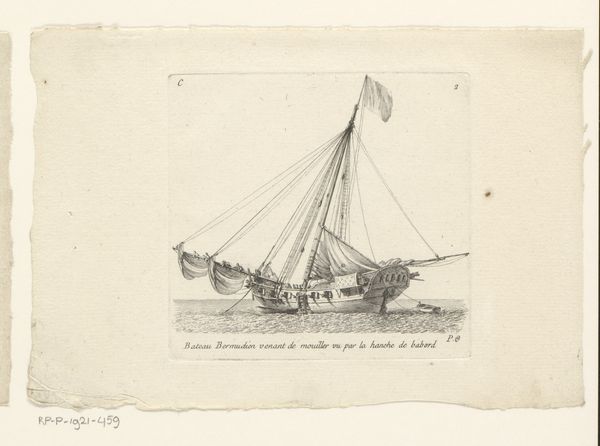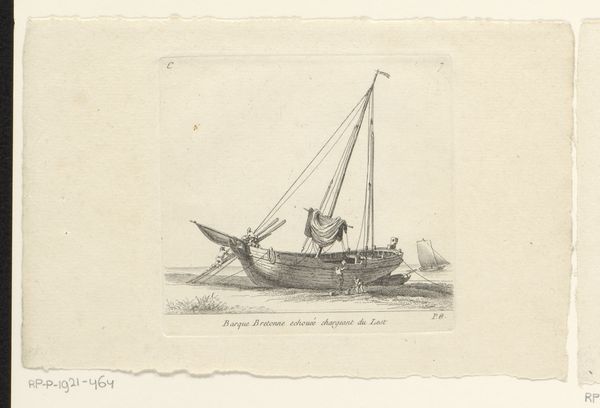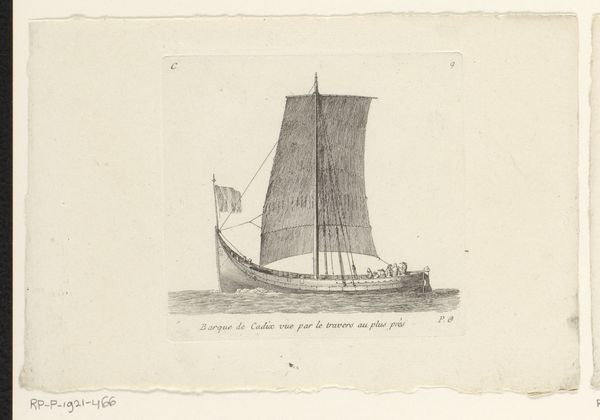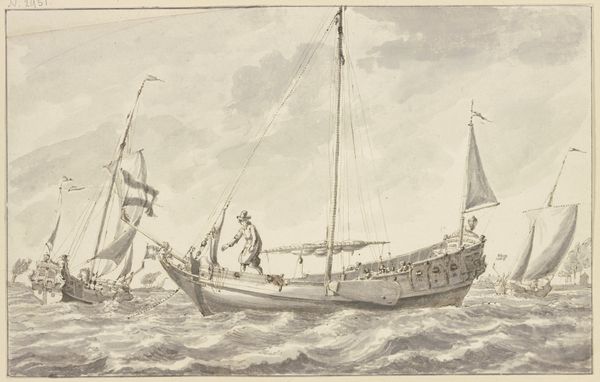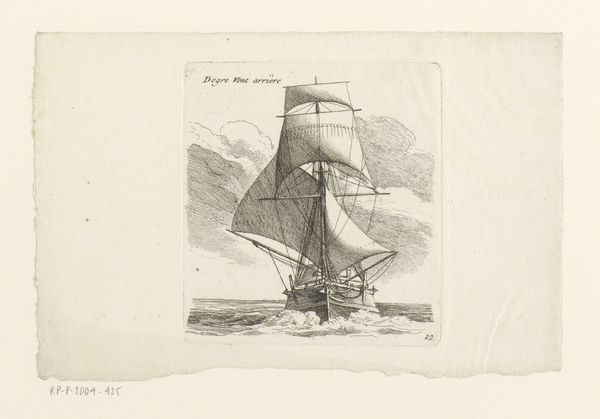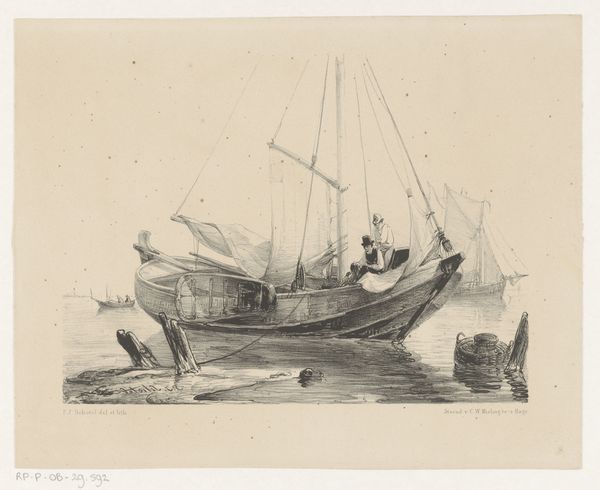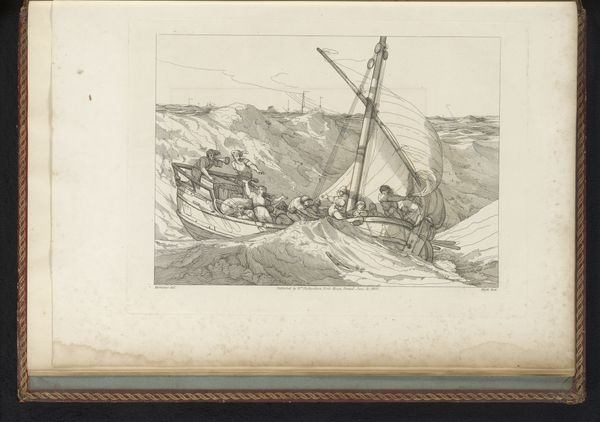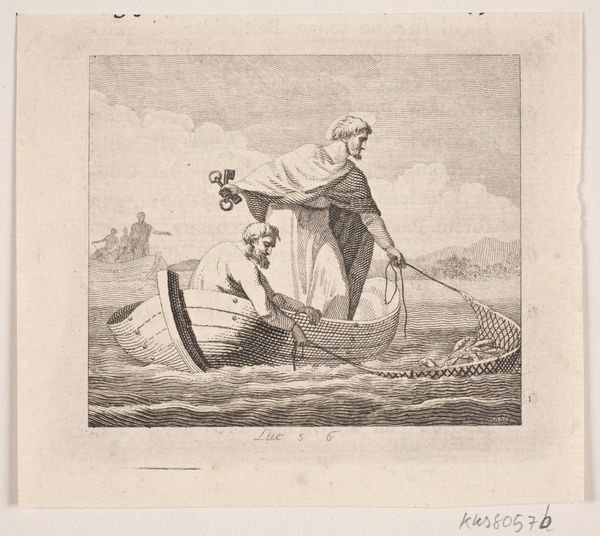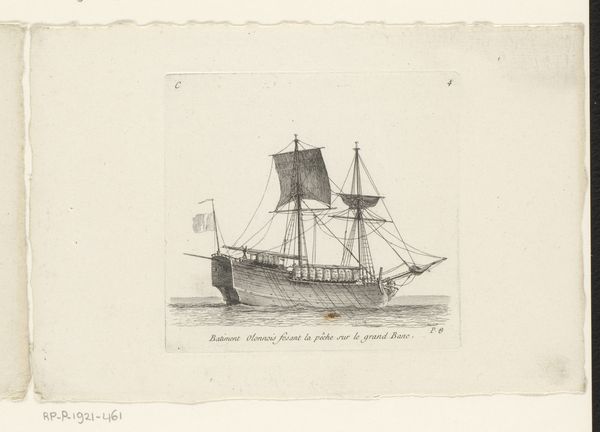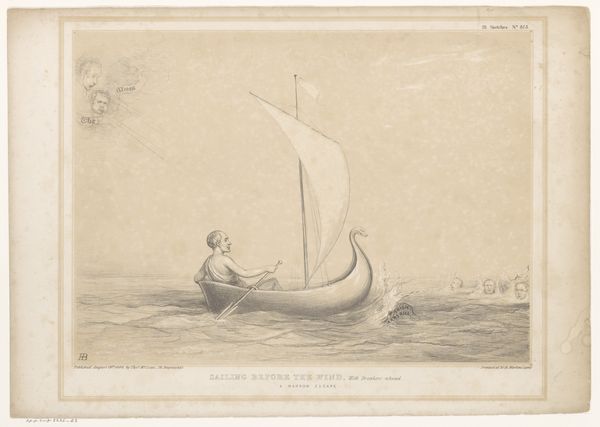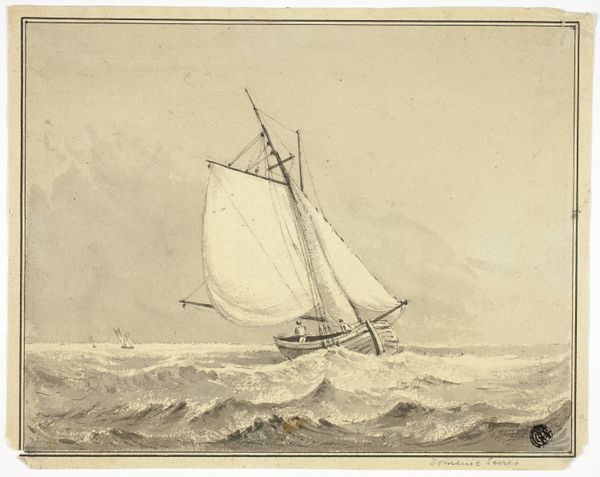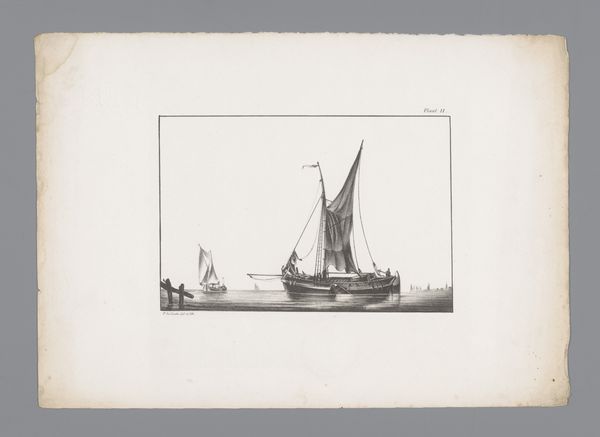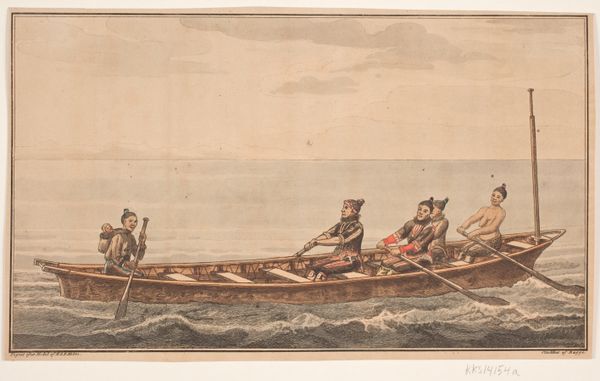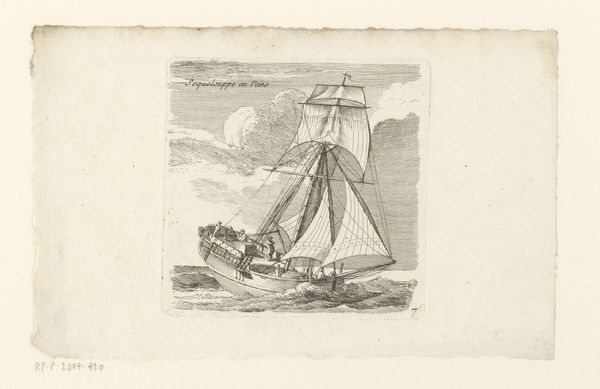
Halfnaakte man een vrouw met bagage vervoerend op een traditionele boot 1836 - 1912
0:00
0:00
drawing, paper, pen
#
drawing
#
narrative-art
#
landscape
#
paper
#
pen
#
watercolor
Dimensions: height 157 mm, width 172 mm
Copyright: Rijks Museum: Open Domain
Curator: This is a drawing by Isaac Weissenbruch, created sometime between 1836 and 1912. It’s titled, "Halfnaakte man een vrouw met bagage vervoerend op een traditionele boot," or "Half-naked man transporting a woman with luggage on a traditional boat." Editor: My immediate reaction is of contrasts – we have a drawing of a fairly austere landscape, yet the central figures create an almost comical scene, with their oddly juxtaposed clothing styles. Curator: I'm drawn to the implied symbolism. We see what seems like an indigenous boat, built perhaps from reeds, transporting two figures across the water. Water itself is potent, representing the unconscious, and a boat suggests a journey. Who might these figures be? What do their clothes say about their story? Editor: To me, it's also about the materials: paper, pen, possibly some watercolor washes. And, of course, the labor involved. Consider the contrast in physical effort here. The rower is nearly nude and laboring mightily, while the passenger sits passively wrapped in heavy clothing. What does that tell us about class and access in Weissenbruch's time, especially thinking about maritime transport and its connections to colonialism? Curator: It’s a really interesting point! The rower is indeed working hard. In this period, there are very powerful narratives around colonial expansion, often seen as transporting knowledge or ‘civilization’ across cultural divides. The almost subservient depiction of the rower in the landscape complicates those familiar tropes, as does the apparent disparity in the travellers. Editor: Absolutely, and focusing on the "how" as well as the "why" makes this more tangible. What did it mean, materially, to depict that journey? What paper was available, what kind of ink, and how would Weissenbruch, in the act of rendering this image, reinforce or subvert established power dynamics of artistic patronage? Curator: Thank you; this discussion reminds me of the continuing legacy we ourselves hold while standing and studying these works today. How cultural narratives are being translated over time through visual media. Editor: Yes, seeing the art production within its socioeconomic web – it illuminates how it shaped its original audiences.
Comments
No comments
Be the first to comment and join the conversation on the ultimate creative platform.
